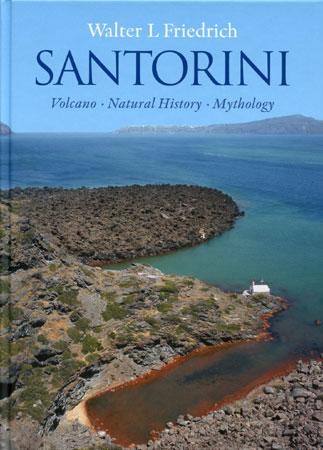Santorini: Volcano, Natural History, Mythology
Walter L. Friedrich

City: Aarhus
Year: 2009
Publisher: Aarhus University Press
Description: Hardback, 312 p., b/w & colour ill., 27,5×20 cm
Abstract
This is a completely new and revised edition of Fire in the Sea: The Santorini Volcano, Natural History and the Legend of Atlantis (originally published by Cambridge University Press, 2000). When the Greek island of Santorini, classically known as Thera, dramatically erupted in 1613 BC ±13 years, it produced one of the largest explosions ever witnessed, thereby possibly giving rise to the legend of Atlantis. This so-called ‘Minoan’ eruption triggered tsunamis that devastated coastal settlements in the region. On Santorini it left behind a Bronze Age Pompeii, which is now being excavated. Thriving Bronze Age settlements on the island – rich in colourful wall paintings and highly sophisticated pottery – were buried under thick layers of volcanic ash. The ejection of an immense volume of dust into the atmosphere also altered global climate for several years. The author blends the thrill of scientific discovery with a popular presentation of the geology, archaeology, history, people and the environmental settings of the island group of Santorini. The author also seeks to assign certain geological structures, such as faulted rocks, red lavas and harbour sites, as depicted on the Bronze Age frescos from Santorini, to still-existing details in the Santorini landscape of today.
Contents
Preface [ix]
Acknowledgements [x]
Introduction [xi]
I. The geological framework
The geography of Santorini [7]
Santorini and plate tectonics [23]
The geological development of Santorini [33]
Stratigraphy – the backbone of geology [51]
Plant remains and geological time [61]
II. The Minoan eruption
The mechanism of the Minoan eruption [79]
When did the catastrophe occur? [99]
III. The volcano releases its secret
A Bronze Age Pompeii [125]
What was living on the island in the Bronze Age? [137]
An idea takes hold [151]
Geological observations and mythology [187]
IV. The island is changing its appearance
The caldera is filling again [205]
Volcanism today [229]
Present and future changes of the island [247]
V. Appendices
VI. References and indices

Comments
Παρακαλούμε τα σχόλιά σας να είναι στα Ελληνικά (πάντα με ελληνικούς χαρακτήρες) ή στα Αγγλικά. Αποφύγετε τα κεφαλαία γράμματα. Ο Αιγεύς διατηρεί το δικαίωμα να διαγράφει εκτός θέματος, προσβλητικά, ανώνυμα σχόλια ή κείμενα σε greeklish.